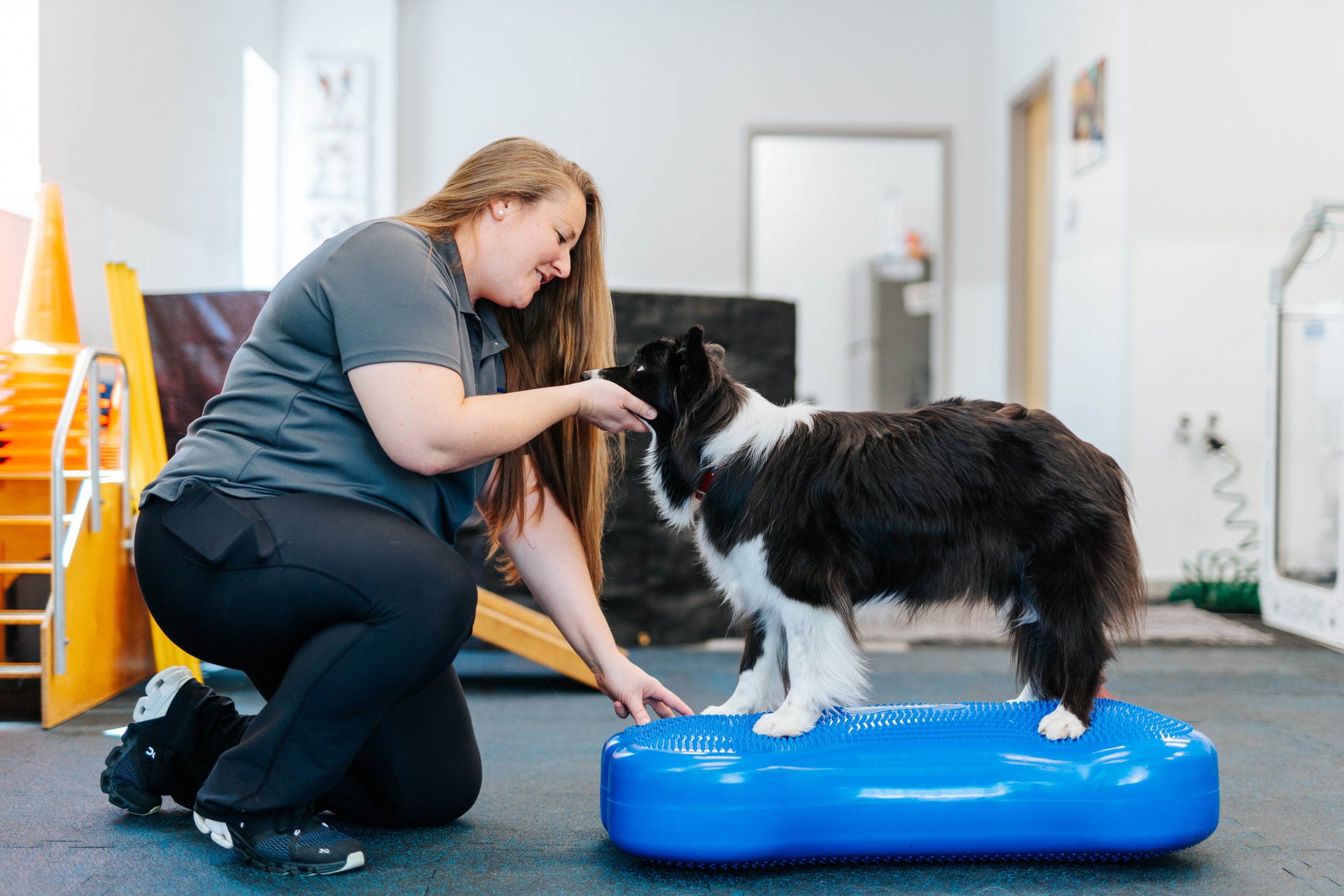Rehabilitation After TPLO
Cranial Cruciate ligament repair surgery is often recommended after a tear to achieve the best possible outcome for the patient. There are several surgical techniques that can be used in this repair, but the most common is a tibial plateau leveling osteotomy (TPLO). During this procedure the surgeon will remove damaged cartilage, the torn ends of the cruciate ligament and the top of the tibia to remove the slope that keeps the stifle gliding forward. Once this slope is removed, a plate is attached to the tibia to hold it in its new position.
Numerous studies have been conducted recently regarding the effectiveness of rehabilitation after orthopedic surgeries. Studies have shown that early post-operative pain is reduced with rehabilitation interventions such as joint mobilizations, massage, TENS and laser therapy. After TPLO, early passive range of motion exercises can help flexion and extension of the stifle and prepare the leg for weight bearing when the patient is ready. A rehabilitation specialist will help owners know when it is appropriate to begin load bearing exercises and instruct them on how to do them properly. As the patient becomes stronger and more mobile, the introduction of more advanced exercises and the introduction of the underwater treadmill will further strengthen both limbs, as well as improving core stability and improving proprioception in the surgical limb.
A review of a study that examined dogs in two groups following TPLO surgery: Group one was allowed crate rest and controlled leash walks at home, and group two had rehabilitation appointments three times a week for 6 weeks with a prescription home exercise program in between rehabilitation appointments.
Ice and passive range of motion exercises began within 2 hours post-surgery. Controlled exercise began the day after surgery, after owner instruction and training from the rehabilitation specialist. In the rehabilitation group at week 3 and week 6 the range of motion of the stifle in both flexion and extension was greatly improved over the leash walk group. The rehabilitation group also reached normal thigh circumference (as compared to their non-surgical limb) at 6 weeks. The leash walk groups did not achieve normal range of motion or thigh circumference during the length of this trial.
Therapeutic exercises are essential to achieving the best possible outcome from surgery. In humans, physical therapy is expected after every orthopedic procedure. This should become the norm for our four legged family members as well. After TPLO, early rehabilitation should be considered as part of the postoperative management to prevent muscle atrophy, build muscle mass and strength, increase stifle joint flexion and extension and range of motion. These are the indicators that equate to soundness, the best possible quality of life, and return to previous activity for these patients.
Monk, Michelle & Preston, Christopher & Mcgowan, Catherine. (2006). Effects of early intensive postoperative physiotherapy on limb function after TPLO in dogs with deficiency of the cranial cruciate ligament. American journal of veterinary research. 67. 529-36. 10.2460/ajvr.67.3.529


